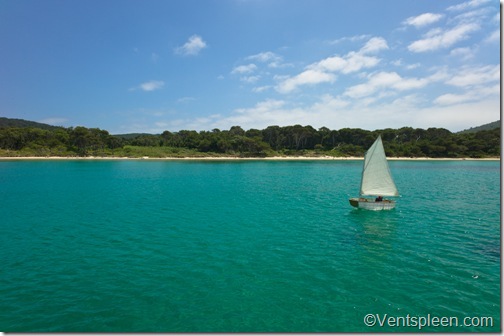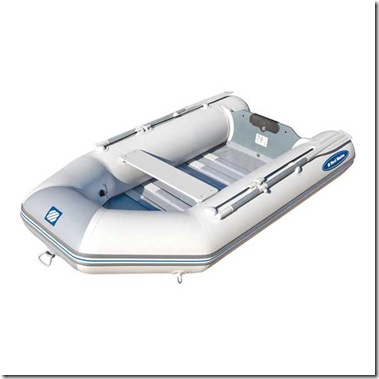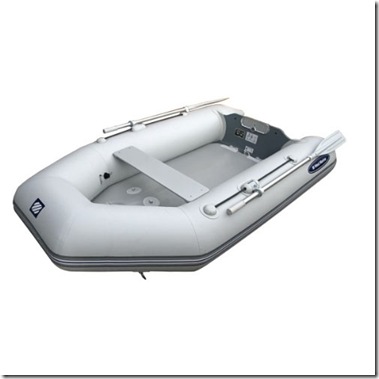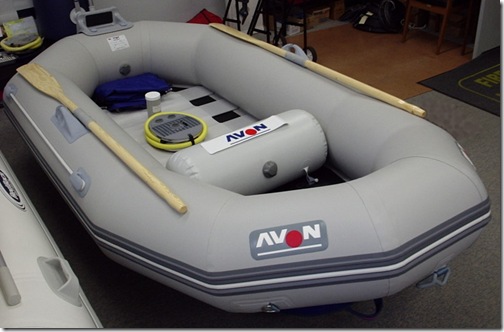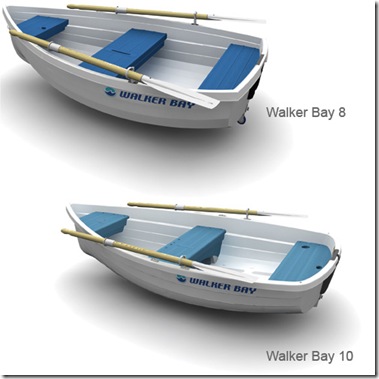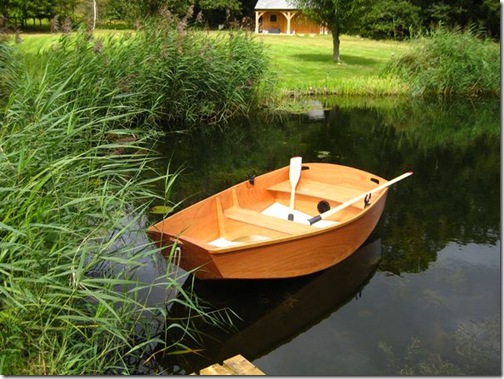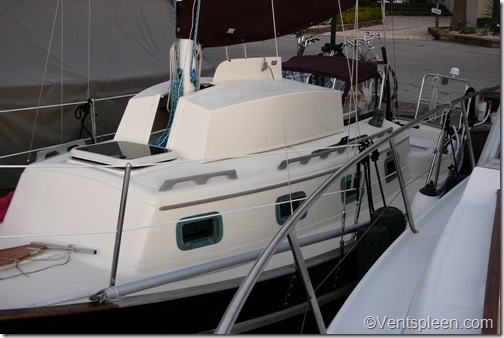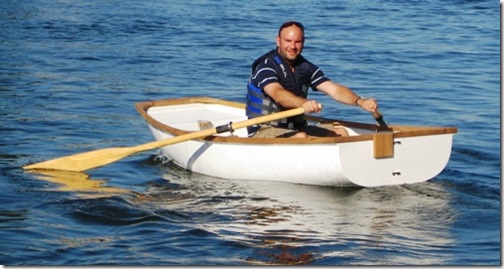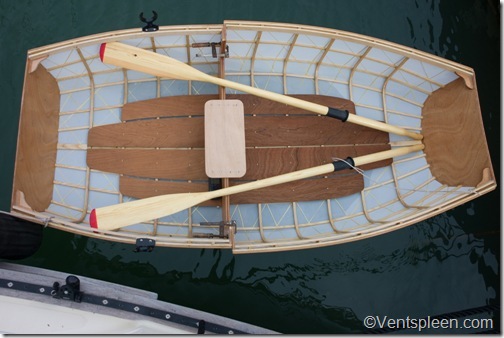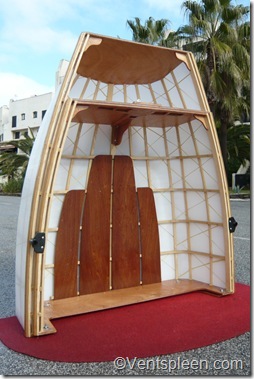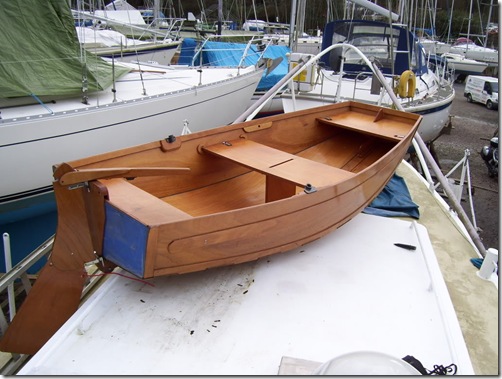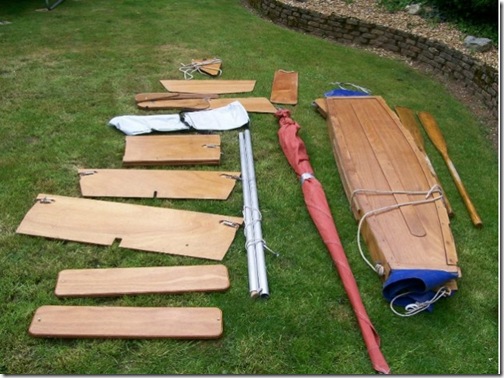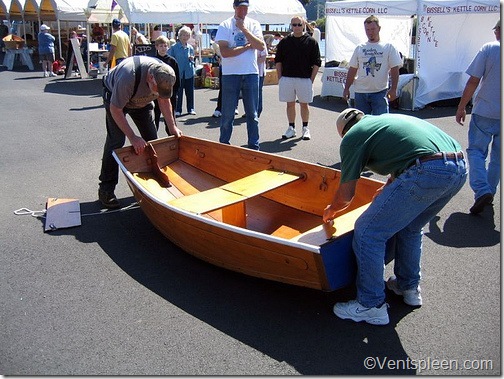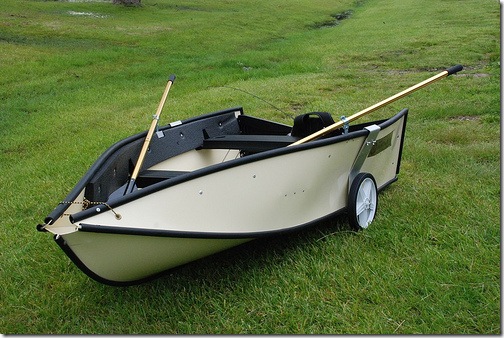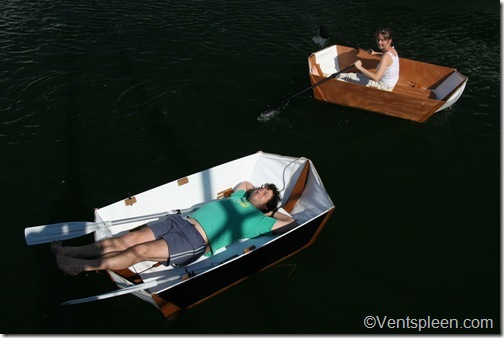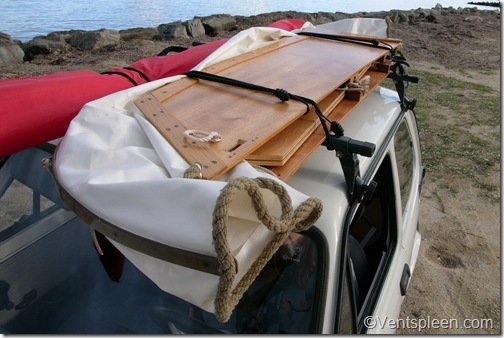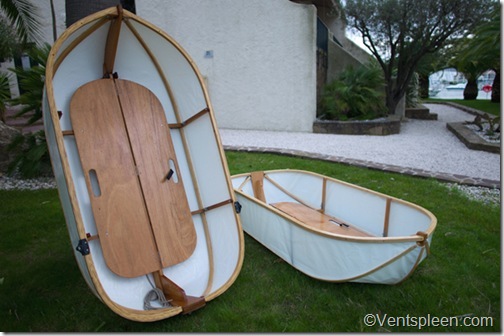OK, so that is a trick question because all dinghies are a compromise. In an ideal world we’d probably like a 4 metre rib with a 40 hp engine on the back that can carry 4 at high speed in the roughest weather. The reality is that a boat like this will be costly and impossible to use in the real world. I mean, for starters, where would you put it when it wasn’t being used?
Before you can decide which dinghy is best for you you’ll have a list of priorities. For example, here are a long list of features that are important. They are in no particular order. That is for you to decide.
Cost: Only you know how much you are willing to pay for a dinghy but remember that the more you pay, the more desirable your dinghy will be to thieves and the more upset you will be when it’s damaged or stolen.
Buoyancy: What will happen when your dinghy is swamped by waves and starts to fill with water? Will it stay afloat even with occupants? Of course buoyancy can be easily added at the cost of inconvenience. The best is built in buoyancy in the way of water tight compartments but having these adds weight and reduces options for storing.
Stability: Small boats are notoriously tippy and only careful use will keep them afloat. If you are light and nimble then this probably won’t matter to you but if not you will probably want something that is very stable such as an inflatable dinghy.
Stowage: It’s all very well having an 10 foot dinghy but only if you have somewhere to store it when not in use. A dinghy can be towed of course but when it gets rough it might become a liability, fill with water, flip over and sink or smash into the back of your yacht. The safest place to stow a dinghy is aboard the mother yacht be it in special davits, lashed to the deck or stowed below.
Rowing: Inflatable boats do not row well and this is why most owners also buy an outboard to go with it but outboards are noisy and smelly and pollute. They are heavy and hard to put on the dinghy and take up a lot of valuable stowage space. You will never offend anyone by rowing.
Sailing: Not all dinghies can sail, or be made to sail. Various attempts to make inflatables sail have been tried but the high drag, lack of lateral resistance and floppy structure makes the inflatable a poor sailor.
Outboards: They are costly, liable to theft, they can go wrong, take up space, pollute, make noise and smell. You may not need one if you buy something other than an inflatable.
Size: How many people do you need to carry? How able are they? How much do they weigh? Do you really want to carry all the extra weight of boat around for an occasional use? Would you be better with a smaller boat and make more trips to and from the shore?
Build your own: There are a lot of plans out there if you are the DIY type. This gives you the option of getting what you want although ultimately it may not be cheaper than buying a ready made boat.
So lets look in more detail at the options. First we’ll discuss the different types of dinghy and tenders available.
Inflatable beach toys: These are cheap inflatable boats with no safety features whatsoever. They are usually made of one continuous tube so if you get a hole in it, the entire boat will deflate and it will sink. They are not very tough and so easily damaged. They generally cannot take an outboard (petrol or electric) and will probably not have a decent system for attaching oars.
If you are in a warm environment and you never go more than a few metres from the mother ship and you can swim then a beach toy will get you to the shore and back. The reason why people buy them is because they are cheap. Generally a poor choice for a yacht tender.
PVC Inflatable dinghy: This is one up from a beach toy and will have at least two or more air chambers so that if the skin is punctured it will not sink. It will be made with a better quality, thicker skin that is more resistant. It may have the option to mount a small electric motor and will certainly have a system that allows it to be rowed.
They cost more than a beach toy and are generally no larger than 8 feet long. These are a bit safer than a beach toy but the PVC is relatively easily damaged and they will not be very resistant to damage from use or sunshine. Not a bad choice for a yacht tender as they are not expensive but far better to invest in a better quality inflatable made from Hypalon.
Hypalon inflatable dinghy: This is the most common choice of yacht tender. The Hypalon fabric is highly resistant to wear and UV damage. The boat will be made of several sections so will remain afloat even if one tube is punctured. They are very stable and good for heavy or clumsy people.
There are a host of advantages to inflatables which is probably why they are so popular as dinghies. They come with fabric floors, fabric floors with slats, inflatable floors or hard floors (RIBs)
They won’t damage the yacht when along side so they can be left in the water alongside the yacht. They can generally plane at speed with a big enough outboard. And of course they can be deflated for stowage although this takes some time. As does re-inflating them again later. A good pump is essential but even still, it can take a long time to pump it up. You can buy electric pumps which work well but are extremely loud and annoying.
On the down side, Inflatables are very heavy and hard to move about. Even deflated the smallest inflatable will be a bulky nuisance, either getting in the way on deck or struggling to stow it in a locker. This is probably why most people do not deflate them and either tow them or stow them on deck.
Towing an inflatable will cause drag and if the weather gets nasty it might even flip. Never tow an inflatable with a motor attached! If you decide to stow it on deck, you will have to get it there and most people use a halyard. In any case it’s almost always a two man job and when stowed on deck it’s likely to restrict vision and cause drag when sailing to windward or end up catching ropes and sheets. Not to mention restricting movement on deck. A complete pain in other words!
Inflatables are also very desirable to thieves because they are so common and they all look similar. They are not good to row and I have seen quite a few people get into trouble on windy days quite unable to get back to their yacht. This is why most are fitted with an outboard but then you are faced with the various problems that this brings, such as removal and storage on the boat, carrying yet another explosive fuel aboard not to mention the smell or the pollution and the fact that they can quite spoil an idyllic anchorage when there are dozens of them buzzing back and forth all day.
Sometimes it’s quicker to get the oars out and simply row to the shore but for some reason most owners just equate the inflatable with an outboard. I can’t tell you how many times I have seen a couple struggling to get the engine off the boat and onto the dinghy, then of course the engine won’t start or needs filling with fuel. It really would have been much less effort to paddle ashore!
Inflatable kayaks: Some people like kayaks for a dinghy and in some ways they are much better than an inflatable. Their more boat like shape means that they paddle well so you do not need an outboard. They deflate and stow easier too as they generally do not have solid floors to worry about.
Hard dinghies: The best bet from a performance point of view is always a hard dinghy. They are tough, usually have built in buoyancy (which can double as waterproof containers) row well and take an outboard. The down side is that they are heavy and hard to stow. If you use a dinghy a lot and have space for it, a hard dinghy is the best. It can also be converted to a sailing boat and that is excellent fun.
Nesting dinghies: This is a hard dinghy in two (or more) parts. The idea is that one half fits inside the other for stowing. This gives all the advantages of a solid dinghy but with a few more options for stowing. Some can be converted to sailing boats but they are generally heavier.
Folding dinghies: There are a lot of folding dinghies and if well engineered can be just as good as a hard dinghy. The downside of the folding dinghy is usually that it cannot have built in buoyancy so will rely on an external system such as buoyancy bags. Some can also sail. Often they are complicated and slow to assemble and have essential pieces which can get lost. They can also be very costly.
The best choice for me?
With the above information, you should be able to work out what kind of dinghy would best suit you and your situation. For example, if you want a dinghy that can sail, then you won’t be choosing an inflatable dinghy. If you want one that also rows, again the inflatable is not your best choice.
For me, the best dinghy that I could have would be a solid one because it can row and sail well. But the problem I have is where would I store such a dinghy aboard my boat? The answer is that I can’t! I have tried inflatables and while I appreciate their stability and buoyancy I do not like the fact that they don’t row well and can’t sail. Nor do I like their folded bulk or weight, nor their popularity with thieves!
What is best for me is a hard dinghy that can stow. So I am looking at either a nesting or a folding dinghy. Over the last 20 years I have tried all of the above suggestions and each has its good and bad points. It’s for you to decide which features you can live with and those you can live without.
After the basic fact that I have to be able to stow and deploy my dinghy easily, there’s no doubt that the ability to row and sail is high on my list of priorities as is stability. At the end of the day I have had the most success with folding dinghies. They just make so much sense.
Looking in detail as some of the choices of dinghy
The Inflatable Dinghy
The inflatable is the most common form of tender. There are many reasons for this as we have already discussed but one of the main reasons for their popularity probably has to do with cost and availability. The market is saturated with models from many different companies, there’s so much competition that prices are kept generally low and you will find inflatables for sale in every ship chandlers the world over.
Prices start from about 300€ which is about as cheap as any dinghy on the market but because they do not row well and cannot generally sail one must also cost in the price of an outboard engine. Even the smallest outboard engine will cost at least 400€. Then you must ask yourself where will you store the outboard when it is not in use? You may have a locker you can put it in but outboards are smelly things and the smell can end up penetrating the rest of the boat which is not pleasant. Many people fit a bracket to the pushpit at the stern where the outboard is stowed. This will mean the addition of a bracket (and more cost) plus the outboard will be always out in the elements which will quickly degrade it and lower its value. You can of course get a cover made but again this all adds to the cost.
The outboard on a bracket also adds weight and windage where you don’t want it. It might even get in the way. It is also vulnerable to theft and makes the boat look fussy. It will certainly need a lock to deter thieves but unfortunately a lock will not stop a determined thief.
Blowing up and deflating an inflatable is a miserable experience. Most dinghies come with a foot pump but they are very annoying to use and it can take as much as 20 minutes to inflate even the smallest boat with one. They are also very badly made and generally break or leak after a very short time. An inflatable boat that cannot be inflated is as useful as a chocolate fireguard!
There are other options of course. The hand operated pumps that you stand on are a much better way to inflate a dinghy but again, it’s more cost and they are quite bulky. Or you can buy an electric inflator but they cost and need power and worst of all are extremely noisy. Making this kind of noise in a peaceful anchorage will not endear you to your neighbours.
Inflatables are generally pretty tough and hard wearing but they don’t like to be left out in the sun. Being regularly folded also puts creases in the fabric which in time can cause leaks. The most common problem with inflatables is that the transom comes unglued. Small holes can be repaired easily with a patch and there are products that can fix quite big tears with a clamping system.
So I think you can see that the inflatable seems like a good idea at first but once you consider the realities and extra costs and hassle involved you might want to think again. If you can leave the dinghy inflated at all times with the engine fitted then the inflatable makes a lot of sense but not many boats are big enough to allow this.
The cheaper inflatables have a simple rubber floor which is very flexible and very annoying because it is always moving. When water gets in (as it will) you will get wet feet as the weight of your body will always create a low spot where water runs to.
The next step up is a slatted floor. This adds cost and complexity and makes the stowed package a bit more bulky and heavy. It is still far from ideal as you will still have your feet in water. The nest step up from slats is an inflatable floor. This works very well giving the boat good stiffness and it also means that you have a chance of keeping your feet dry. The down side is that it adds weight and takes longer to inflate. An inflatable floor adds cost too.
The ultimate inflatable is the RIB (rigid inflatable boat) which is basically a narrow hard dinghy with inflatable sides. Obviously these are heavier, more costly and do not roll up although the sides can be deflated to reduce its size a little. They offer the best performance of all inflatables.
There is one last kind of small RIB that needs a mention, it’s a jet boat, a sort of mix between a RIB and a Jetski and I for one have never understood why anyone would buy one. They have an inboard engine which takes up loads of interior volume and are hopeless to manoeuvre. They are noisy and smelly and expensive and heavy and frankly make a very poor tender for any yacht.
The Hard dinghy
The hard dinghy is the best performer of all the dinghies you can have. They can be rowed, sailed, motored or even sculled along. They are tough and much better looking (generally) than inflatables and can be painted to match the mother ship. They are most often made in wood, ply, alloy, plastic or grp.
The biggest problem with a hard dinghy is that they are heavy and bulky in as much that they do not reduce in any way for stowing. Some hard dinghies can be modified in shape to fit on a certain place on deck. If you have space you can maybe store the dinghy inverted on the cabin top. The bigger boats store them upright and stow things in it and then use a cover to stop water getting in. Stowing the dinghy the right way up makes it quicker to deploy.
If there is no room on deck then you may be able to use davits. These are basically arms normally attached right at the back of the boat that are used to easily lift the dinghy out of the water even with an engine still fitted. It is a quick and easy system that often uses a purchase to make lifting the weight easier.
The problem with davits are many fold however. All that ease comes at a price. Firstly the davits will need to be attached to the boat. Because of the weight and leverage involved they will not only have to be strong but more importantly so will the boat where they are bolted on. It is entirely possible that the boat will need to be reinforced before davits can be used. This obviously adds cost and weight.
Once the davits are in place you will then discover that your rearward visibility has been seriously compromised. This is more than just an inconvenience, it is also potentially dangerous as you are just as likely to get run down from behind as anywhere else! Also if you moor stern to, such as in the Med a dinghy in davits off the stern will mean you will have no choice but to moor bows to.
The boat’s sailing performance will also be seriously hampered by a dinghy in davits, not only is that a fair bit of weight very poorly placed high up and right at the stern but it will create a lot of drag, no problem if you are always running downwind but as we all know reality just ain’t like that.
There is also a chance that the boat and the dinghy can be damaged by wave action as the boat is completely vulnerable stuck out the back as it is. A dinghy in davits must be very well attached and tied up to the davits so that it cannot move under any circumstances but it will also need a cover to keep water out.
The last point is that if you do have a problem with the dinghy in davits you might find yourself hanging out over the back of the boat to deal with the problem. This is not very wise and quite dangerous.
So as you can see, the main problem with a hard dinghy is where to put it when it’s not in use. Hard dinghies are available to buy ready made, in kit form or available for home build from plans.
Nesting dinghies
Nesting dinghies share most of the attributes of a hard dinghy but with the advantage that they can be effectively cut in two and stowed one half inside the other to reduce their size. They are probably going to be somewhat heavier than a standard hard dinghy as they have a join which tends to add complication and weight.
Sometimes the shape of the dinghy is compromised by the nesting action. Generally the bow section is made to fit into the stern section but this sometimes leads to a compromise bow shape that lacks buoyancy and reduces interior volume.
One of the biggest problems with nesting dinghies is the rowing position which is often logically placed above the join but is often too far forward. It may work fine with two occupants but it may be very bows down when rowing alone. It’s a small detail but where you sit when rowing in a small boat makes a fantastic difference to the way it rows.
Sometimes nesting dinghies can be somewhat complicated to assemble and it may not be possible to assemble the boat in the water. If this is the case, the dinghy cannot be launched easily in two halves so you will have to struggle with the weight of the complete boat.
Obviously nesting dinghies will be more costly than an ordinary hard dinghy. But if you insist on a hard dinghy but don’t have much space perhaps a nesting dinghy is the way to go. Even if it cannot be assembled in the water it will probably still be faster to assemble and launch than it would be to inflate and launch an inflatable dinghy.
Most nesting dinghies have some kind of built in buoyancy which is safe but reduces interior volume and adds weight.
Nesting dinghies are available to buy ready made, in kit form or available for home build from plans.
Folding dinghies
Ever since Noah, people have been looking for the perfect dinghy, one that does everything a good dinghy should do but weighs very little and packs away easily to a small package. In some respects folding dinghies are the closest mankind has ever come to this utopian dream. Not surprisingly there is a large choice of folding dinghies made from many different materials.
There are many designs to choose from some made of wood or alloy, some with a framework and a canvas type of material. The more solid versions are often heavy and take some time to assemble with many parts needed which make them difficult to assemble on the limited space of a yacht deck.
There are so many different types of folding dinghy that it is hard to generalise. Some can sail, some can take an engine, some can plane, some are extremely tough, others less so. Some can be assembled in moments, others take a bit longer. What they all share is the ability to reduce in size massively to make stowage easier. Most folding dinghies row well and certainly better than any inflatable.
Some folding dinghies are very tough but if they are tough it means that they are heavy. The lighter versions use a fabric that is similar to an inflatable and can be damaged through misuse but like the inflatable they can be quickly and easily repaired if holed.
Folding dinghies do not have built in buoyancy although they may float depending on the material they are made of. However it is easy enough to add buoyancy bags although this does make assembling them take a bit longer.
They are available to buy off the shelf, in kit form or even for home build from plans.
Looking at some available dinghies
Inflatable dinghies
Inflatables are available to buy anywhere in the world and the choice of boat is enormous. Generally they are all similar in shape, colour and ability but with differences in quality and details. Some of them are very high tech
This is a typical inflatable boat. This one has slatted floors which offer some rigidity to the floor but not too much weight. It also allows the boat to be easily rolled up. Often inflatables have the oars always attached but more often than not the oars are not of a good quality. One of the reasons why an inflatable rows so badly is because the oars are too short.
This is an inflatable boat with an inflatable floor. It makes for a much stiffer boat and it’s possible to keep your feet dry. The bulkiness of the floor (even deflated) makes the boat more bulky and heavy when rolled. If you add one feature, you lose another. This is true for all boats.
Here is the classic Avon Redcrest. It’s been around for decades and has a dedicated following. What makes it different from most inflatables is that it has a rounded shape at the stern. The problem with this is that although you can add an outboard the force of the engine makes the tubes move and the motor can flop about. That is why most inflatables have pointed ends so that a solid wooden transom can be fitted.
Hard dinghies
The clever Walker Bay range of hard dinghies. Made from super tough moulded plastic and easily converted to a sailing dinghy. The only real problem with hard dinghies is where to stow them. Even an 8 foot hard dinghy will be too hard to stow and lift aboard most cruising yachts.
The Elterwater Pram dinghy. These can be built from plans or you can buy a kit of ready made pieces to glue together. Available from Fyne boat Kits.
There are a huge amount of hard dinghies available on the market in all shapes and sizes made from any number of materials. Most will row well and some can be sailed. If you have space and don’t mind the weight then a hard dinghy may be for you.
For those who insist on a hard dinghy there is the Woodenwidget Deckster with its removable front section that allows it to be stowed around a mast. Even though the Deckster can be nicely stowed it still shares all the other issues that hard dinghies have such as being heavy and reducing forward visibility. It does however row, sail and motor and can even use the revolutionary Hobie Mirage drive.
Nesting dinghies
This is a true hard dinghy but it comes in two pieces. One side nests inside the other. nesting dinghies share all of the issues with hard dinghies but often have additional issues. Sometimes the hull shape is compromised to allow one side to nest inside the other. The join adds complexity and weight. Nesting boats cannot always be assembled in the water. This one comes from Nestaway who have an impressive range of nesting boats. The weight of this boat is about 50 kilos which doesn’t sound much until you try and move it about.
The Woodenwidget Stasha. The lightest nesting dinghy in the world. At just ten kilos it’s child’s play to move around. Made from an ash framework then covered with heat shrink Dacron it rows, motors and even sails extremely well.
The Woodenwidget Stasha nested. The Stasha is unusual for two reasons, one; it can be assembled in moments either ashore or afloat and it’s the rear section which nests inside from front section. This makes for a much less compromised hull shape and a more balanced rowing position.
Folding dinghies
There is a huge range of folding dinghies. Some, like the Seahopper are more like hard dinghies that fold. Others like the Woodenwidget Fliptail are super lightweight for ease of use.
The beautifully made Seahopper folding boat. This is like a hard dinghy that can fold though it must be said it is fairly longwinded and complicated to assemble and there are many pieces involved as you can see from the pic below.
A great folding boat though a bit complicated but if you want a folding boat that behaves like a hard dinghy then this would be ideal.
Here’s the Flapdoodle folding dinghy which can be built from plans.
This is the Porta-Bote a polypropylene folding boat. It looks a bit strange but has sold in the thousands over many years. Super tough and light but it still has extra pieces that need to be put in place. Not the cheapest folding boat available but it is quality.
Here is the classic Woodenwidget Origami folding dinghy. They don’t come much more simple than this. Available in two sizes (6’ & 8’) they are available in plan form only but the boat is so simple to make and the plans so comprehensive that almost anyone can build themselves one. They might look a bit box like but they are surprisingly stable and work very well indeed.
Here is the Origami 6 when folded. At just 15 kilos it’s one of the lightest folding boats you can find. It has built in carry handles so is very easy to carry.
Here is the Woodenwidget Fliptail 6 and 7 foot versions. Like all Woodenwidget designs they row, motor and sail. Pretty, light, stable, tough, easy to assemble with no extra parts to forget (all pieces needed to erect the dinghy are always attached to the boat) the Fliptail has to be one of the most versatile folding boats in the world. Available to build from plans.
So there you are. I hope a fairly comprehensive explanation about the compromises one has to make when choosing a dinghy and a basic oversight into what is available on the market. I hope it has been of help to you
